
B2B Articles - February 28, 2019
Author: Nikki Pacitti
B2B email marketing is an effective tool for improving lead to sales conversion rates, and lead nurturing improves buyer readiness by sending targeted communications to different audience segments.
When companies understand how to effectively nurture marketing leads to sales readiness with targeted emails, sales and marketing teams begin to align and work together more efficiently. Unfortunately, when lead nurturing is not executed properly, you waste time and money on generating leads, not to mention that you also let valuable leads go cold in your sales funnel. Here are the three biggest mistakes marketers make with lead nurturing emails:
34% of US consumers are frustrated when they are sent recommended items that do not match their interests. ¹
Many companies have a hard time nailing down who their ideal buyer is and what they’re interested in. This is a crucial step in creating the foundation for an effective digital marketing strategy. Failing to tailor your message to your ideal buyer will cause a discrepancy in the overall business value. Every time a buyer comes in contact with your business, the messaging should focus on value and pain points that resonate with them.
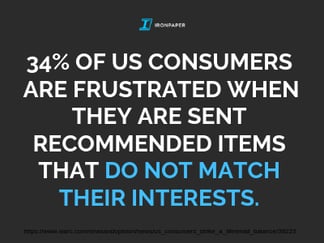
Pro Tip: Tailor your messaging for different kinds of buyers. One way to do this is to create buyer personas. A buyer persona is a semi-fictional character that is based on research and represents an ideal customer. Marketers can attribute buying interests, behavioral patterns, demographics, and motivations to a buyer persona to further understand how to target their messaging and positioning. There are multiple methods of capturing this data - a few examples include:
Without an understanding of their ideal buyer, many marketers struggle to write effective content because they have a limited understanding of where prospects are in the buyer’s journey. Not aligning email messages and content offers to the buyer’s needs at each stage of the journey decreases the effectiveness of your lead nurturing campaign.
A great example of this mistake is sending a buyer that is still in the awareness stage an email about requesting a demo of your product or service. Although they may have subscribed to receive blog updates, that does not mean they are ready to be contacted by the sales team.
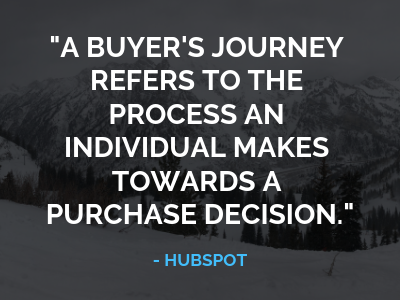
With a better understanding of buyer stage and interests, marketers can more effectively nurture leads with targeted content. To better understand buyers and their needs at each stage of the process, try content mapping.
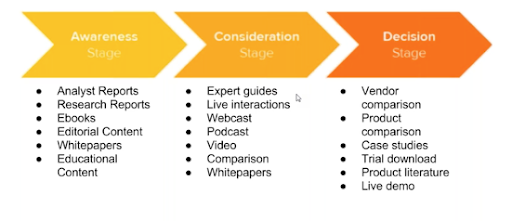
Content mapping organizes “who gets what content and when.” A quick and easy way to map out and organize content is by creating a simple spreadsheet that aligns content with each of the three stages of the buyer’s journey. Identify gaps and areas where you may not be effectively nurturing your leads so you create the right content and deliver it to leads when they’re ready.
Read more on content mapping here: How to Match Content to Buyer’s Journey Stage
Within the awareness stage, emails should be buyer-centric, not company-centric. Meaning, the focus should be on educating the buyer on their problem, not your solution (another common mistake marketers make).
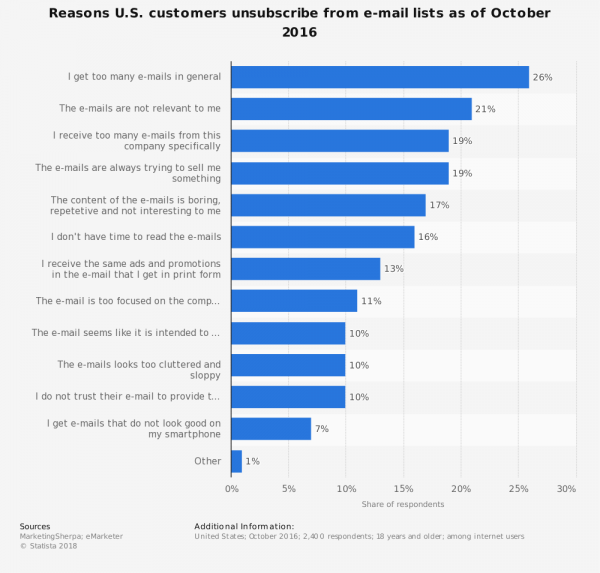
11% of consumer respondents stated that they unsubscribe from company email lists because the email was focused around the company’s needs and not their own. Buyers in this stage may not fully understand their problem yet, which is why education is key in this phase. Blog posts, eBooks, white papers, webinars, and infographics are great examples of valuable content that guides the buyer to the next stage of their journey. The biggest problem that occurs here is when sales and marketing push buyers to make a purchase when they are not ready. Keep your content educational.
At this point in the buyer’s journey, buyers have an understanding of their problem and are searching for solutions. This is where companies make the mistake of simply listing features and benefits. It is important to differentiate the product or service within this content so you set it apart from competitors. eBooks are still a great option to provide the buyer with during this stage as well as case studies, reviews, and testimonials from clients.
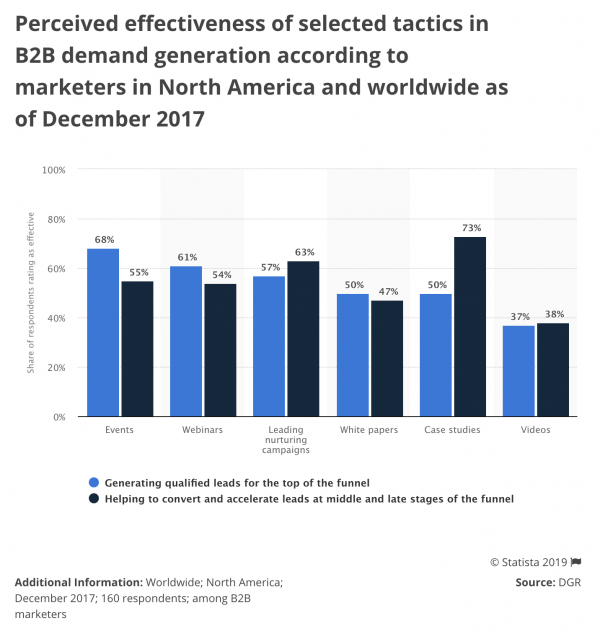
After weighing the pros and cons, the buyer is ready to take action and make a purchase. Just like before, a big mistake that is made in this stage is not differentiating the product or service from the competition. Differentiation can be done with content, by providing data sheets, pricing guides, thought leadership, specialized demonstrations, or competitor comparison sheets. Another focus in this stage of the buyer’s journey is to get your leads to talk to sales. Offering free demos, trials, or consultations are effective methods to get your sales team in the door.
Pro tip: It’s best practice to follow up with your sales qualified leads (SQLs) within the first 5 minutes² after they are generated online. Research has found a 400% decrease in the likelihood of qualifying leads when sale reps waited 10 minutes or more³. Every minute that passes increases the opportunity for your competition to step in to answer their question and take your sale, or for leads to shift their priorities to another task.
Personalization plays a huge role in email performance, and too often marketers make the mistake of not using personalization enough during lead nurturing. In 2018, 77% of marketers used personalization in email marketing worldwide. If you’re part of the 23% and sending one-size-fits-all generic emails, you’re missing a big opportunity to improve your email conversion rate.
Important KPIs that indicate how well an email lead nurture is performing are open rate and conversion rate — both metrics that improve with personalization. High open rates result from an effective subject line that draws a reader into the email and the conversion rate helps determine if the content that is being sent is actually achieving its goals.
To measure the effectiveness of a subject line, marketers look at open rates. Companies make the mistake of speaking about themselves within a subject line or email message rather than displaying the value to their customer. For example, take a look at these two subject lines.
The first subject line incorporates personalization, an enticing question, and has the buyer questioning how smart technology could impact their city. The second is focused around the company, rather than the buyer and doesn’t compel you to click.
The CTA (call-to-action) is a button or link that drives the action you want a prospect, lead, or customer to take within a website. CTAs are tied directly to the overall goal of the email campaign, so your CTA needs to be compelling for a successful campaign. It’s difficult to effectively nurture contacts and measure their engagement without prospects clicking the CTA and converting on offers.
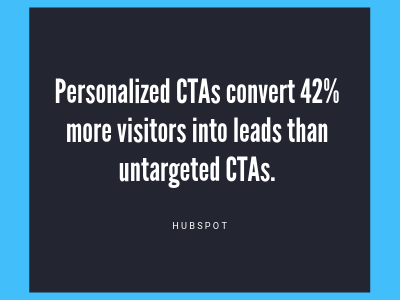
Common CTA Mistakes:
Related reading: How to increase lead generation with a focused call-to-action (CTA)
To recap, here are four questions to review while you are creating or optimizing your lead nurturing email campaign:
Related reading: How to Nurture Leads from the Awareness to Consideration Stage
Testing provides insights that help marketers understand their buyer’s pain points, interests, and purchase-readiness. It’s important to consistently experiment and test new ideas, messaging, and content offers. Failing to test and analyze messaging, subject lines, and content offers lower your ability to understand what is resonating with your leads.
As mentioned at the beginning, B2B email marketing is a great entry point for improving leads to sales conversion rates, so don’t miss this chance to move leads down the sales funnel and improve your overall conversion rate.
Testing allows marketers to experiment with using personalization, messaging, and content offers. Without testing, marketers have no knowledge to improve campaigns, which means campaigns will be guesswork at best. There should be a testing process and time period so that before you begin a new campaign, you understand what works and what doesn’t.
As Albert Einstein once said, “A person who never made a mistake never tried anything new.” Marketers that continually test and learn from their mistakes and results are more likely to develop more successful campaigns in the future. By optimizing the weak points from a previous campaign will help you gain further insights into understanding your buyer and lead to marketing success.
Tel 212-993-7809
Ironpaper ®
10 East 33rd Street
6th Floor
New York, NY 10016
Map
First-party data marketing
SEO for B2B
Customer journey strategy
ABM Agency
Marketing for IoT Companies
HubSpot Implementation
B2B Product Marketing
Measurable Marketing
IoT go-to-market strategy
IT Marketing
HubSpot for ABM
Go to market strategy
Technology Marketing
Marketing for IT Companies
ABM Campaigns
B2B lead generation
B2B Marketing and Growth Agency.
Grow your B2B business boldly. Ironpaper is a B2B marketing agency. We build growth engines for marketing and sales success. We power demand generation campaigns, ABM programs, create B2B content, strengthen sales enablement, generate qualified leads, and improve B2B marketing efforts.